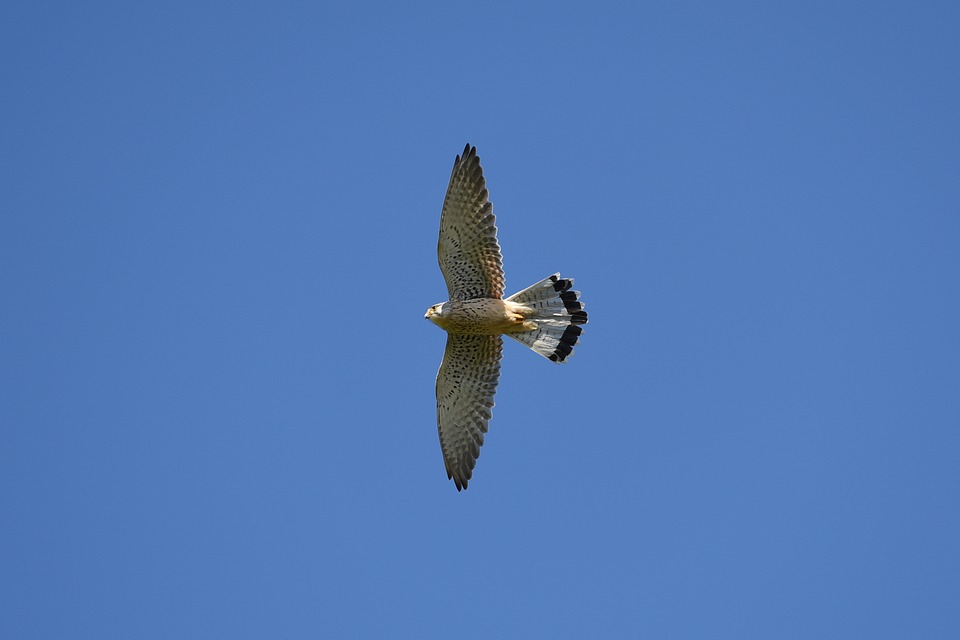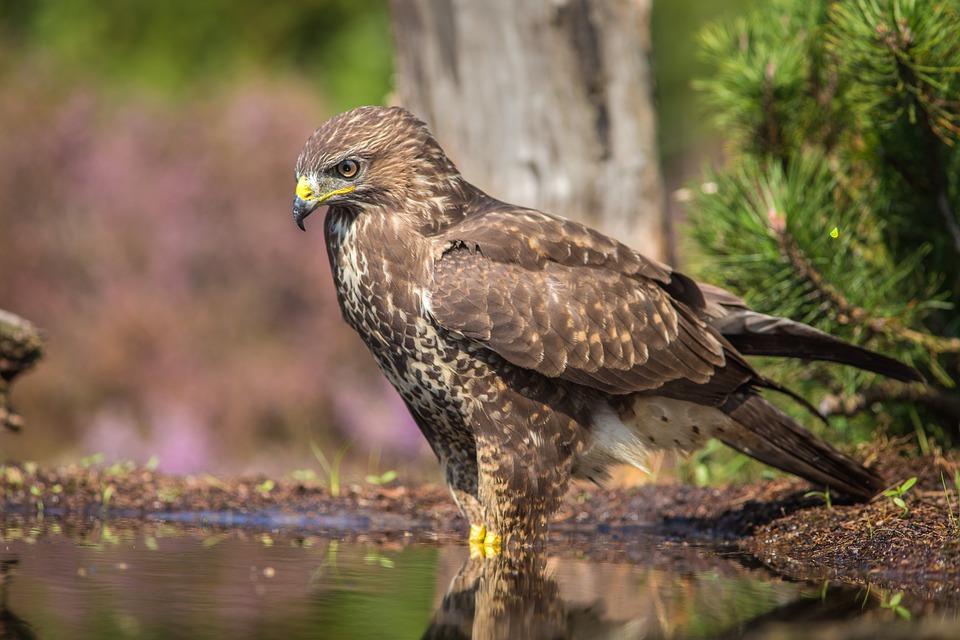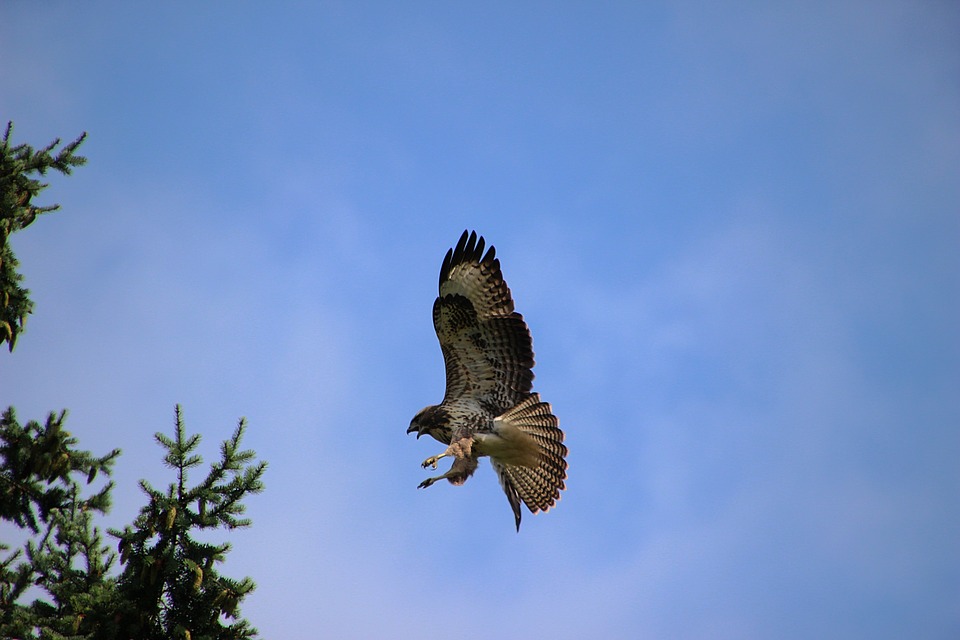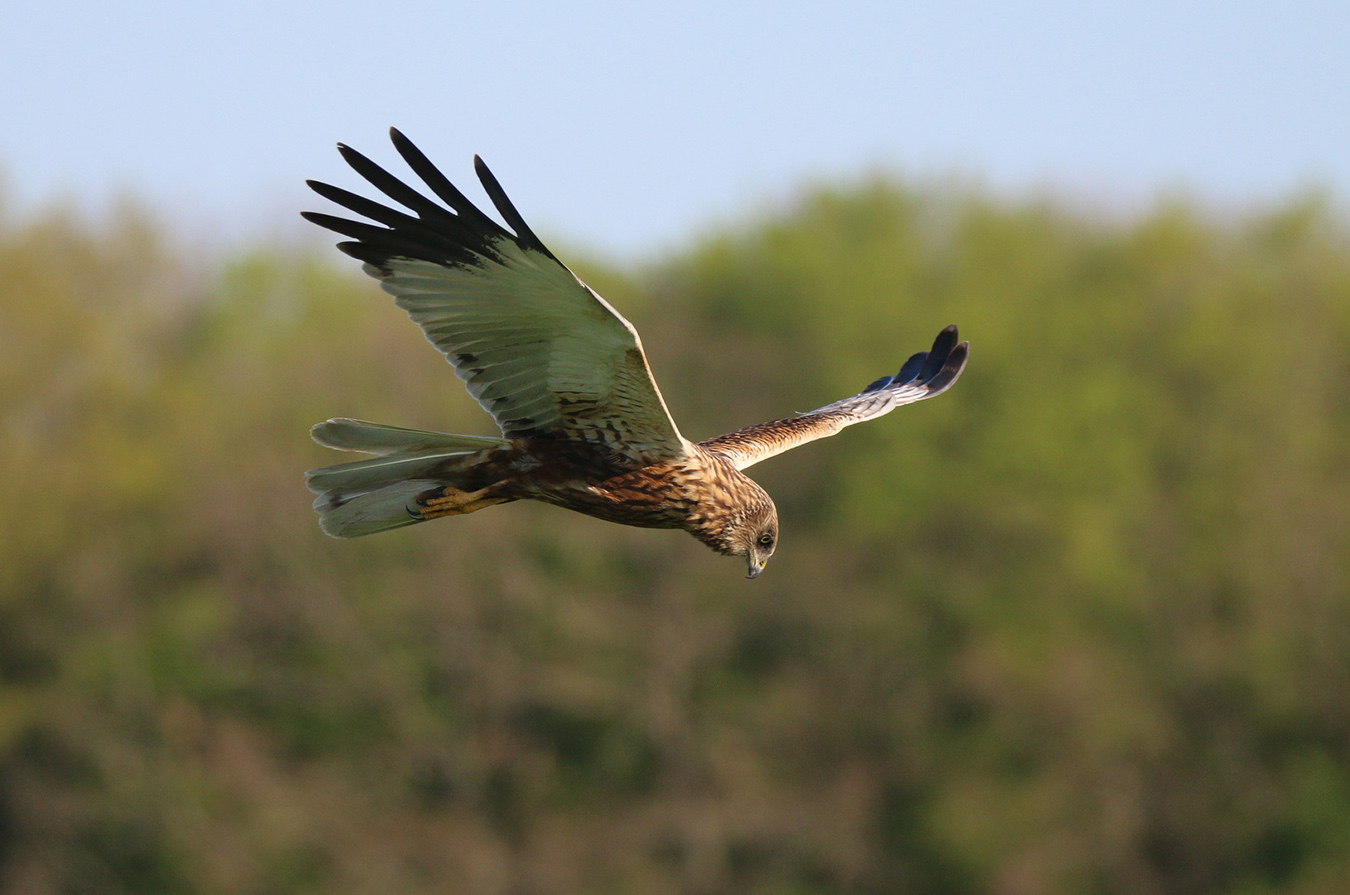Now that temperatures are slowly warming up and we are getting a few sunny days we are all thinking about pulling on the hiking boots once again and getting some lovely fresh air into our lungs. As well as the gorgeous countryside we have to explore in the Cotswolds with all manner of wildlife, we are also lucky enough to get sightings of beautiful birds of prey in the wild. British birds of prey come in a range of different shapes, sizes, and families meaning it can be difficult to tell them apart when you only have a fleeting glimpse as they dart by, so have a look at the information below for the types of birds you can look out for when you are out and about walking and how to identify which birds of prey you are seeing.
Kestrel
Kestrels are one of the best-known falcons in this country and are often seen hovering over motorways or road verges where they are usually looking for mice or voles in the long grass. You can tell a Kestrel because they have long, pointed wings and a long tail. The male Kestrel is smaller than the female and they have a greyish blue head with light brown backs and breasts, while the female Kestrel is generally brown with mottled black feathers. Kestrels are amazing at hovering and are one of the best birds of prey at this skill. They fan their long tails out for balance and flap their wings very fast in order to stay air-born.

Sparrowhawk
Sparrowhawks were almost extinct in the UK because of pesticides that caused their eggs to break before they could hatch, but after successful conservation work, we now have as many as 40 thousand pairs breeding in Britain which is wonderful news. Sparrowhawks are adapted to hunting in woodland and like to eat birds ranging from blue-tit size to pigeons. Sparrowhawks have short, blunted wings which allow them to fly between trees and small spaces at speed. Their tails are long and squared at the ends which gives them the skill and agility to manoeuvre tight corners.
Males are known as muskets and stand about the size of a thrush with a redish breast, white bars, and a slate grey back. The females are far bigger than males at about the size of a wood pigeon and are grey and white in color, with black bars down their breasts.

Red Kite
Red kites have also been saved from the brink of extinction with the massive help of reintroduction projects all over the country. Red Kites are fairly unmistakable with deep red/orange colours and distinctive forked tails. They are communal birds and like to gather together in great numbers to scavenge for food. Look out for them circling with their long, broad-fingered wings in a v-shape.
Red kites can often be found following farmers around who are ploughing their fields as they like to eat carrion and love the earth worms that are exposed during ploughing.

Common Buzzard
20 years ago Buzzards were critically endangered but have thankfully bounced back from the brink of extinction and can be found all over the UK. Their tails are wedge-shaped and their winds are long and broad which allows them to use thermal columns to gain height very easily. They like to soar high in the sky whilst looking for a meal on the ground with their superb eyesight which they’ll dive down on with folded winds,
These birds are mainly scavengers and will readily eat carrion. They hunt small mammals like rabbits and are even very happy eating earthworms. Whilst mainly brown they do have light patches on the underside of their wings which can help to distinguish them from ravens or large crows if you only have a glance.
A good way to spot buzzards is to listen for their distinctive and ‘mew’ call.

Cotswold Falconry Centre
If you don’t manage to spot any birds of prey whilst out and about walking then there are a couple of places to visit where you will be guaranteed a sighting. The Cotswold Falconry Centre is a great place to visit with the aim of giving people a greater knowledge of birds of prey and an understanding of the ancient art of falconry. There are over 130 birds of 60 different species and flying displays take place daily. You can learn about how the different species hunt and catch their prey and the skill sets they possess to make them successful predators.
Between the displays take a walk around the breeding aviaries, some of which may be successfully breeding right in front of your eyes. The centre is also home to some birds that are critically endangered in the wild.
Walks With Hawks
Walks with Hawks is another great place to visit in the area, based in Cheltenham, you’ll have the rare opportunity to handle and fly a variety of Birds of Prey. The Hawk walks are the perfect introduction into for adults and children to experience the art of falconry and as you walk in a small group you’ll have the chance to spot not only Hawks but also deer, foxes and other native birds of prey.


0 Comments